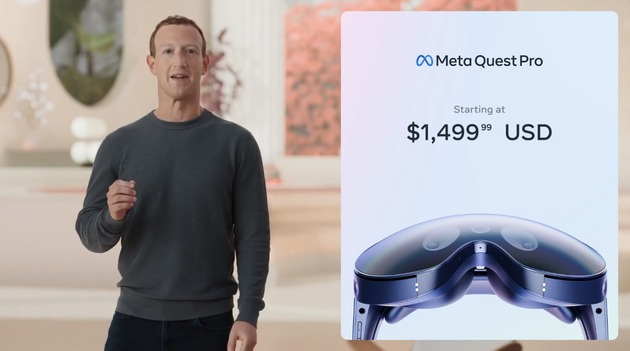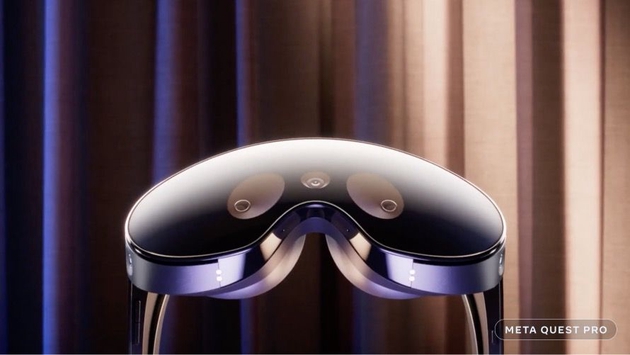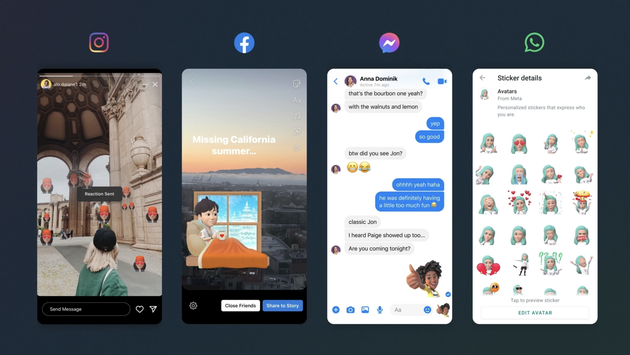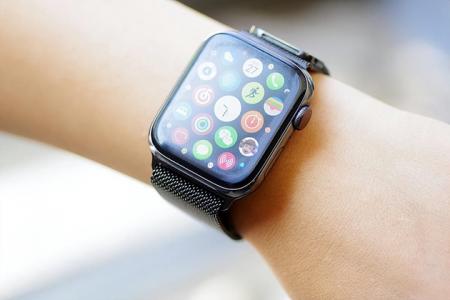your current location is:Home > TechnologyHomeTechnology
Replacing the desktop? Facebook pushes 10,000 yuan VR headset to grab the computer market, and joins hands with Microsoft to reduce the cost of Metaverse
One year after its official entry into the "metaverse", Facebook released the Quest Pro, a high-end VR (virtual reality) headset.
In the early morning of October 12, Beijing time, Meta, the parent company of Facebook, held its annual Connect conference and officially released the high-end VR headset Quest pro, which costs nearly $1,500 (about 10,811 yuan). ), pre-sale has started.
In addition, CEO Mark Zuckerberg (Mark Zuckerberg) also said that it will launch a web version of the virtual social platform Horizon Worlds, and improve the avatars (Avatars), and launch a full-body version.
Quest Pro for $1,500, shipping October 25
The Quest Pro, which had been repeatedly mentioned by Zuckerberg for the past year, finally made its debut at the Connect conference. The high-end VR headset is priced at $1,499.99 and has been pre-sold in 22 countries and regions, and will ship on October 25th.
 The Quest Pro costs $1499.99.
The Quest Pro costs $1499.99.The Quest Pro is part of the Quest VR headset family, but not an iteration of the Quest 2. Zuckerberg said that this device is redesigned and improved on the basis of Quest 2. The body uses the Pancake lens, which is popular in the VR industry, and the thickness is reduced by 40%. Its battery is moved to the rear bolster and weighs more than the 503-gram Quest 2 at 722 grams.
The Quest Pro has 256GB of storage, and unlike the Quest 2, this device isn't launching in a cheaper 128GB model.
Compared to the previous series, the new headset adds two new features. First, the Quest Pro adds a new set of inward-facing cameras to track the user's eyes and face, so Avatars can show more detailed movements such as smiling, blinking, and raising eyebrows.
Second, the Quest Pro can display full-color passthrough video—the outside world seen through the Quest 2 is black and white, while the Quest Pro can reproduce color images. The Quest Pro uses a high-resolution, outward-facing camera to capture the outside world and render it inside the headset. This is called "mixed reality." Virtual objects exist in the same space as the user, meaning the user can virtually Interaction, such as pinning a virtual picture on a real-world wall.
 Quest Pro.
Quest Pro.In addition, Meta has made improvements to the controllers of the Quest Pro. Whereas the old headset had an LED ring on top to track the handle, the new handle is embedded with a motion-capturing camera for a wider range of motion. The new controller also replaces AA batteries with built-in batteries, allowing the controller to charge at the base of the headset.
Despite several modifications, the button layout on the controller remains the same, so the new controller is compatible with games and applications from the Quest 2, and users can pair the new controller with the Quest 2. At $299, the controller is nearly the same price as the Quest 2 — its 128GB version was $299.99 before the Quest 2 announced a price hike in July.
On the software side, the Quest Pro is also compatible with the Quest 2 app, and also provides finger tracking input and voice input. But most of the new features won't roll out until 2023.
It is worth noting that the performance upgrade brings battery life problems. Meta said that the battery of the Quest Pro can only last for one to two hours, and it does not support fast charging.
Focus on the office field and cooperate with competitors
Unlike the Quest 2, which focuses on fitness, gaming, and other entertainment, the Quest Pro is aimed at businesses and professionals who can afford higher prices. In other words, the new device is focused on the office space.
Meta's chief technology officer Andrew Bosworth, which is trying to build the Quest Pro into a new generation of office supplies, said a future VR headset could replace the current desktop.
To achieve this ambition, Meta entered into a partnership with rival Microsoft (Microsoft) in a "handshake". At the Connect conference, Microsoft CEO Satya Nadella (Satya Nadella) attended with Zuckerberg, saying that next year will bring Windows 365, Teams and Xbox cloud games to the Meta headset.
In the future, users could wear Meta's headset and use their avatars to join Microsoft Teams meetings. Additionally, Windows applications are available on Quest devices.
Zuckerberg said, "We think VR can play a very powerful role in the social aspect, and we also hope to introduce more functions in the work environment with the Quest Pro, and Microsoft has launched some very successful products in the office area."
In fact, Microsoft has also been involved in the metaverse, and has launched HoloLens, a mixed reality headset for professional users. The product starts at $3,500, more than double the price of the Quest Pro.
The Wall Street Journal reported that the reason for Meta’s partnership with Microsoft was presumably to avoid “losing too much” in the metaverse. After all, Meta has invested a lot in the metaverse and is still losing money.
Meta's metaverse division, Reality Labs, has been unprofitable. The division had revenue of $1.1 billion in the first half of this year, an increase of nearly 37% year-on-year, with a loss of $2.802 billion in the second quarter and a loss of $10.2 billion for the full year of 2021. Meta said Reality Lab's revenue in the third quarter will likely be lower than in the second.
Daniel Newman, principal analyst at Futurum Research, a consultancy focused on digital technologies, said Meta's extension of the Metaverse to the office space makes sense.
"$1,500 is a lot of money for a consumer, but it's not enough money for a business trip," Newman said. "While current video conferencing also enables people to meet online, many meetings are structured like Meta. Doing it face-to-face like that requires a highly participatory and collaborative environment.”
Avatars will have "legs"
At the Connect conference, Meta also announced that it will develop Horizon Worlds on the web, where users can meet friends in VR worlds through their phones or laptops.
Horizon Worlds is a virtual social platform owned by Meta, which Zuckerberg once called "the core to our metaverse vision." Previously, to log in to Horizon Worlds, users needed to purchase Meta's Quest headset and create their own avatar (Avatar). Here, users can realize most activities in the real world, use virtual images to socialize with users around the world, visit friends, attend concerts, and travel around the world.
Meta said it has partnered with the YouTube VR team to allow users to watch YouTube videos with friends in a virtual world. In addition, Meta also plans to add the avatar chat function in the communication software Messenger and WhatsApp, so that users can directly use the avatar to express their emotions without using the camera.
 Meta plans to add avatars to various apps.
Meta plans to add avatars to various apps.It is worth noting that the avatars (avatars) have also ushered in a major update. Previous avatars can only show the upper body, but this time Meta has released a full-body model, adding details of the legs. Zuckerberg said: "The leg model is not easy to implement. Meta will use the leg model in Horizon first, and as the technology improves, the complete avatar will be used in other scenarios."
 The avatar adds leg models.
The avatar adds leg models.related articles
Article Comments (0)
- This article has not received comments yet, hurry up and grab the first frame~












